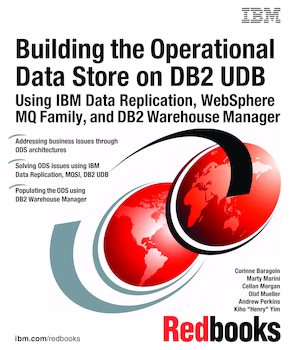Building the Operational Data Store on DB2 UDB Using IBM Data Replication, WebSphere MQ Family, and DB2 Warehouse Manager
An IBM Redbooks publication
Note: This is publication is now archived. For reference only.

Published on 19 December 2001
ISBN-10: 073842420X
ISBN-13: 9780738424200
IBM Form #: SG24-6513-00
Authors: Corinne Baragoin, Marty Marini, Cellan Morgan, Olaf Mueller, Andrew Perkins, Kiho (Henry) Yim and Mark Persaud
Many companies across a host of industries are looking at cross-functional business processes to provide better customer-centric services. Companies want to understand and react faster to the immediate concerns of a customer by improving on activities such as customer service, campaign management, and real-time fraud detection. These services require the ability to access and update an integrated, consolidated, current view of detailed operational data.
In this IBM Redbooks publication we describe how an Operational Data Store (ODS) can be used to address all of these business issues. We describe how an ODS fits within the business intelligence architecture, and we explain the differences between the ODS and the data warehouse.
The capabilities of IBM Data Replication, WebSphere MQ Family, and DB2 Warehouse Manager are explored to show how they can be used to integrate heterogeneous legacy systems and solve many of the ODS issues. Various data integration and transformation methods are described. We show how DB2 Warehouse Manager can be used to manage and monitor the population subsystem. We also take an in-depth look at how DB2 UDB EEE for UNIX and DB2 UDB for z/OS can be used as target ODS databases.
Chapter 1. Introduction
Chapter 2. ODS issues
Chapter 3. ODS architectures
Chapter 4. Populating the ODS from relational sources
Chapter 5. Populating the ODS from non-relational sources
Chapter 6. Administration tips for handling rejected records
Chapter 7. Building and managing the ODS population subsystem
Chapter 8. Critical success factors for the target ODS servers
Appendix A. Implementing message flows with MQSI
Appendix B. Example CICS program
Appendix C. Population subsystem: tables; SQL stored procedures
Appendix D. DB2 UDB for z/OS Cross Loader
Appendix E. The testing environment